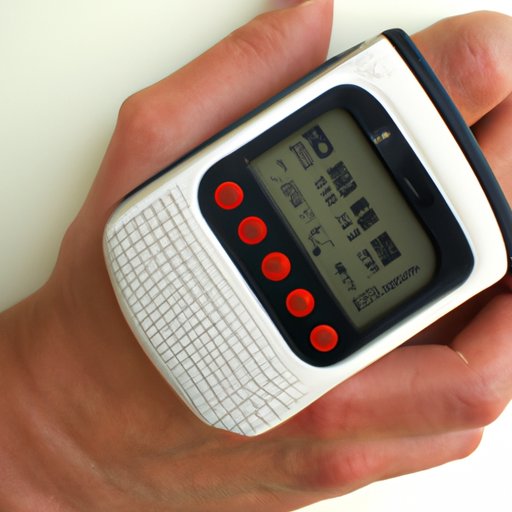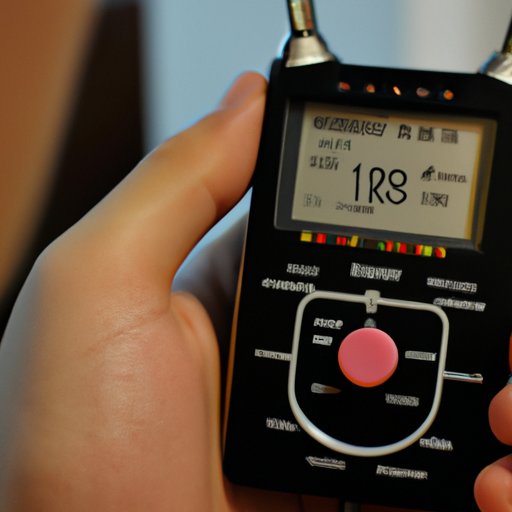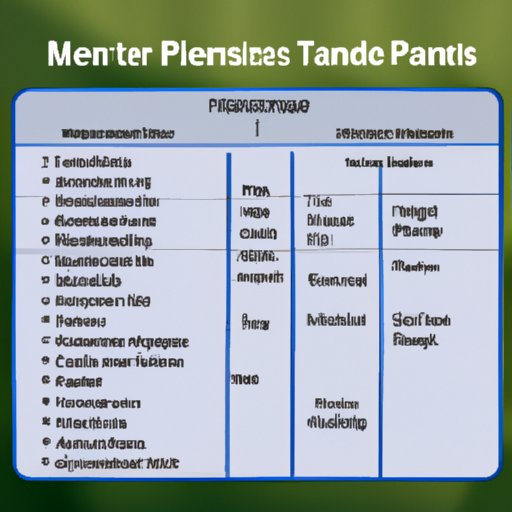Introduction
TENS units are small, portable devices used to manage chronic and acute pain. Transcutaneous electrical nerve stimulation (TENS) therapy sends low-voltage electrical current through electrodes attached to the skin, which helps reduce pain signals from reaching the brain. The device also helps stimulate endorphins, which are natural pain relievers that are produced in the body. While TENS therapy is often used for short-term pain relief, people can also benefit from using it regularly over time.
The purpose of this article is to explore how to make the most of TENS unit therapy by understanding the importance of frequency, intensity, and duration. We’ll look at factors that influence how often to use a TENS unit, discuss how to adjust settings for optimal results, and provide tips on creating an effective pain management plan.
How to Make the Most of Your Tens Unit: Understanding Frequency, Intensity and Duration
When using a TENS unit, it’s important to understand the three main components that affect the effectiveness of a TENS treatment: frequency, intensity, and duration. By adjusting these settings, you can maximize your pain relief and get the best results from your TENS unit.
What is Frequency?
Frequency refers to the number of times a waveform is repeated per second. In other words, it’s the rate at which electrical pulses are delivered. This setting will determine how quickly the electrical pulses reach the nerves. Generally speaking, higher frequencies are associated with more intense sensations, while lower frequencies produce more subtle sensations.
What is Intensity?
Intensity is the strength of the electrical pulses sent through the electrodes. It’s measured in milliamperes (mA). Higher intensities will create stronger sensations, while lower intensities will produce more subtle sensations. It’s important to note that each person may respond differently to different levels of intensity, so it’s important to experiment with different settings to find the right balance for you.
What is Duration?
Duration is the length of time a TENS session lasts. This setting is typically measured in minutes or seconds, depending on the type of TENS unit you’re using. Generally speaking, longer treatments are more effective than shorter ones. However, it’s important to remember that everyone’s needs are different and you should adjust your treatment time based on your own experience.

Managing Pain with a Tens Unit: What You Need to Know About Usage Frequency
When it comes to managing pain with a TENS unit, usage frequency is an important factor to consider. Depending on your individual needs, you may need to adjust the frequency of your treatments in order to achieve the best results.
Factors That Affect Frequency of Use
There are several factors that can influence the frequency of your TENS unit treatments. These include the type of pain you’re experiencing, the severity of your symptoms, your overall health, and any medications you may be taking. It’s important to assess all of these factors before determining the best frequency for your treatments.
Proper Timing of Treatment
In addition to considering the factors mentioned above, it’s important to pay attention to the timing of your treatments. For example, if you suffer from chronic pain, you may want to schedule regular treatments throughout the day. On the other hand, if you only need occasional relief, you may opt to use your TENS unit as needed.
Adjusting Frequency as Needed
Once you’ve established an initial frequency for your TENS unit treatments, it’s important to monitor your progress and make adjustments as needed. If you don’t seem to be getting the desired results, try increasing the frequency of your treatments or adjusting the intensity or duration. Conversely, if the treatments seem to be too intense, you may want to reduce the frequency or adjust the intensity or duration.
TENS Therapy: Making the Most of Your Treatments With Proper Usage Frequency
To get the most out of your TENS unit treatments, it’s important to follow the proper steps when setting up the device. Here are some tips for ensuring that you’re getting the most out of your treatments.
Preparing for Treatment
Before starting a TENS therapy session, it’s important to prepare your body and mind. Take a few moments to relax and focus on your breathing. This will help you get into the right mindset for your treatment.
Setting Up the Device
Next, it’s time to set up the TENS unit. Place the electrodes on the area of the body where you feel the most pain. Make sure they’re firmly attached and that they’re not touching each other. Then, select the appropriate settings based on your individual needs.
Adjusting Frequency for Optimal Results
Once you’ve set up the device, it’s important to adjust the frequency for optimal results. Start with a low frequency and gradually increase it until you start to feel relief from the pain. You may need to experiment with different settings to find the one that works best for you.
Get the Best Results From Your Tens Device: Understanding Frequency of Use
By understanding the importance of frequency, intensity, and duration, you can get the most out of your TENS unit treatments. Here are some tips for optimizing your TENS unit use.
Benefits of Regular Use
Regular use of a TENS unit can help reduce pain and improve mobility. It can also help reduce inflammation, improve blood flow, and promote relaxation. Because of these benefits, it’s important to establish a regular schedule for your treatments.
Using the Right Settings
It’s also important to use the right settings for your TENS unit treatments. Experiment with different combinations of frequency, intensity, and duration to find the one that works best for you. Don’t forget to adjust the settings as needed if you’re not getting the desired results.
Monitoring Frequency for Maximum Effectiveness
Finally, it’s important to monitor the frequency of your treatments for maximum effectiveness. Pay close attention to your symptoms and make adjustments as necessary. If you’re still not seeing improvement, talk to your doctor about other options.

When To Use Your Tens Unit for Maximum Relief: Learning About Appropriate Frequency
When it comes to using a TENS unit for maximum relief, it’s important to understand the appropriate frequency of use. Here are some tips for finding the right balance.
Identifying Your Personal Needs
The first step is to identify your personal needs. Consider the type and severity of your pain, your overall health, and any medications you may be taking. This will help you determine the best frequency for your treatments.
Establishing a Schedule
Once you’ve identified your needs, it’s important to establish a regular schedule for your treatments. Depending on your individual needs, you may need to use your TENS unit several times a day or just once every few days. Be sure to adjust the frequency as necessary.
Adapting Frequency as Necessary
It’s also important to monitor your progress and adapt the frequency of your treatments as needed. If you’re not seeing the desired results, try increasing the frequency or adjusting the intensity or duration. On the other hand, if the treatments seem too intense, you may want to reduce the frequency or adjust the intensity or duration.
Developing an Effective Pain Management Plan With Your Tens Unit
Creating an effective pain management plan with your TENS unit is essential for achieving long-term relief. Here are some tips for developing an effective plan.
Assessing Your Current Situation
The first step is to assess your current situation. Take stock of your symptoms, any medications you may be taking, and any lifestyle factors that may be contributing to your pain. This will help you develop a treatment plan that’s tailored to your individual needs.
Creating a Treatment Plan
Once you’ve assessed your current situation, it’s time to create a treatment plan. Consider the type and severity of your pain, your overall health, and any medications you may be taking. This will help you determine the best frequency, intensity, and duration for your TENS unit treatments.
Making Adjustments as Needed
Finally, it’s important to monitor your progress and make adjustments as needed. If you’re not seeing the desired results, try increasing the frequency of your treatments or adjusting the intensity or duration. Conversely, if the treatments seem too intense, you may want to reduce the frequency or adjust the intensity or duration.

Optimizing Your Tens Unit Use: Establishing the Right Frequency
By understanding the importance of frequency, intensity, and duration, you can optimize your TENS unit use for maximum relief. Here are some tips for finding the right balance.
Determining Frequency Based on Symptoms
The first step is to determine the frequency of your treatments based on your symptoms. Consider the type and severity of your pain, your overall health, and any medications you may be taking. This will help you establish an appropriate frequency for your treatments.
Finding the Right Balance
Once you’ve determined the appropriate frequency, it’s important to find the right balance between intensity, duration, and frequency. Experiment with different combinations of settings to find the one that works best for you.
Monitoring Performance for Optimal Results
Finally, it’s important to monitor the performance of your TENS unit treatments for optimal results. Pay close attention to your symptoms and make adjustments as necessary. If you’re still not seeing improvement, talk to your doctor about other options.
Conclusion
TENS unit therapy can be a great tool for managing chronic and acute pain. By understanding the importance of frequency, intensity, and duration, you can get the most out of your treatments and achieve long-term relief. Remember to assess your individual needs, establish a regular schedule, and adjust the settings as needed for maximum effectiveness. With the right approach, you can optimize your TENS unit use and achieve the best results.
(Note: Is this article not meeting your expectations? Do you have knowledge or insights to share? Unlock new opportunities and expand your reach by joining our authors team. Click Registration to join us and share your expertise with our readers.)
